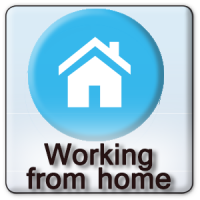- Benefits of Working at Te Whatu Ora
- Allied Health and Support
- Current Vacancies
- Useful Links
-
Nursing & Midwifery
- Application Process
- Benefits
- Midwifery
- New Graduate Nurse Programmes
- Nurse Practitioners in Northland
- Nursing Bureau
- Postgraduate Education
- Professional Development Recognition Programme (PDRP)
- Registration & Immigration Process
- Return to Nursing Programme
- Nursing Recruitment
- Te Tai Tokerau Nursing Conference 2023
- Resident Medical Officers
- Senior Medical Officers
-
Services for Primary Care
-
Advance Care Planning
- Healthcare Practitioner FAQs
- Advance Care Planning in Northland
- He Waka Kakarauri
- Shared Goals of Care (SGoC)
- Serious Illness Conversation Guide
- Whānau Tahi in Northland
- Te Ara Whakapiri: Principles and guidance for the last days of life
- Brochures, Booklets, Documents and Resources
- Legal Framework for Medical Decision-Making
-
Advance Care Planning
-
Staff Login
- Working from Home Support
- Access Your Email
- Access the network remotely (Citrix)
- Yourself
- SMO CME Applications
- SMO CME Approvers
- Yourself Guides
- Zoom Videoconferencing
- Learn
- Occupational Health
- Covid Immunisation Register - CIR
- Maternity Opportunities For Improvement
- Access the Network Remotely - MFA
- Northern Region IT Services Portal
- Holidays Act Remediation Portal - For Former Employees
- Kia Ora Hauora
- Research Office
Working from Home Support
All working from home arrangements are to be approved by your manager.
The Northland District Health Board Working from Home policy outlines how to put this arrangement in place and also includes a Self-check tool (Appendix A) which identifies necessary tools, equipment and hazards.

- Keeping cyber secure at home
- Is this your first time accessing the intranet from home?
- Accessing your work email from home
- Improving connectivity performance as everyone connects remotely
- Contacts for further help
- Using Zoom for meetings
- Tips for keeping records safe
Keeping cyber secure at home
With the increased risk of cyber security threats, it is important to take additional security steps:
- If using your own computer ensure you have up-to-date anti-virus software installed. Microsoft Security Essentials is a free application which works well with computers that use microsoft windows as their operating system.
- Use a long password for your home router or modem preferably with hexadecimal numerals e.g. “summertime1974!”.
- Update iPads or other mobile devices with the latest upgrades.
- Keep passwords and log-ins secure - do not share them or write them down.
- Continue to be vigilant for scam and phishing emails - do not click on suspicious links, report them using the phishing button in Outlook.
- Use multi-factor authentication for logging into regional systems via Citrix.
- Do not forward documents to your personal email/home computer.
Is this your first time accessing the intranet from home?
If this is your first time logging into your Northland DHB account using this computer, then email the helpdesk@northlanddhb.org.nz or phone 09 470 0000 ext 7469 to arrange for the relevant instructions on how to register and login to Citrix to be sent to you.
Note: Please phone ONLY if you don’t have email access as they may not be able to answer immediately.
Accessing your work email from home
You can still access your email via this webmail link, which can also be accessed from this Northland DHB website.
To login:
At Domain\Username enter: nhl\xxxxx "xxxxx" = your user name.
Improving connectivity performance as everyone connects remotely
- Use Outlook Web Access rather than using Outlook via Citrix.
- “Get on then get off” – if you have done what you need to and don’t need to be logged in, logging off will release bandwidth and licences for those performing clinical functions.
Contacts for further help
If you have any trouble with getting onto Citrix or applications are missing, please email the helpdesk@northlanddhb.org.nz or phone 09 470 0000 ext 7469. Please phone ONLY if you don’t have email access as they may not be able to answer immediately.
Using Zoom for meetings
Note: Zoom does not work well via Citrix - either minimise or log out of Citrix first.
Joining Zoom is free and although you don’t need to set up a Zoom account to join a meeting, it is recommended to create one if you don’t have one already.
You will need to create a Zoom account to host a meeting.
Create a Zoom account:
- Open your Internet Browser before you log onto Citrix and sign up at https://zoom.us/signup
- Download Zoom software for PC/Mac here.
- Zoom Mobile app is free from your Play/Apple store
If you need to host or schedule meetings with more than two participants and longer than 40 minutes, you may be eligible to upgrade to a Zoom Pro licence. Please email telehealth@northlanddhb.org.nz.
You can find lots of great tips available here for using Zoom.
Tips for keeping records safe
There are increased and additional risks to records when working from home or remotely – it is important to create and keep track of your records as usual.
Working from home you still need to:
- Make and keep records of work activities
- Keep records safe
- Ensure there is no unauthorised disposal of records
- Comply with the organisations recordkeeping policies and procedures
- Make sure the records are transferred or captured into your official recordkeeping or business systems when you return to your normal workplace.
Remember working from home can pose issues to record keeping and sharing:
- Records may not be captured straight away or at all
- Inability to control duplicates or keep track of multiple versions
- Harder to control access to records, particularly confidential or sensitive records
- Other staff may not be able to access the records they need if it is stored on a personal or individual device (e.g. USB, desktop, portable hard drive)
- Some records may not be included in any back-ups if not on a networked drive, application or work cloud
Manage the risks - things to consider when creating a record
You should give careful consideration to what records you need to capture and how that is done.
- How you would use digital signatures to sign documents if you can no longer print and scan them?
- What records need to be accessed by others?
- What social media content will become a record?
- New record formats you need to capture, e.g. recorded teleconferences or chats (e.g. Zoom).
Last modified:
- Benefits of Working at Te Whatu Ora
- Allied Health and Support
- Current Vacancies
- Useful Links
-
Nursing & Midwifery
- Application Process
- Benefits
- Midwifery
- New Graduate Nurse Programmes
- Nurse Practitioners in Northland
- Nursing Bureau
- Postgraduate Education
- Professional Development Recognition Programme (PDRP)
- Registration & Immigration Process
- Return to Nursing Programme
- Nursing Recruitment
- Te Tai Tokerau Nursing Conference 2023
- Resident Medical Officers
- Senior Medical Officers
-
Services for Primary Care
-
Advance Care Planning
- Healthcare Practitioner FAQs
- Advance Care Planning in Northland
- He Waka Kakarauri
- Shared Goals of Care (SGoC)
- Serious Illness Conversation Guide
- Whānau Tahi in Northland
- Te Ara Whakapiri: Principles and guidance for the last days of life
- Brochures, Booklets, Documents and Resources
- Legal Framework for Medical Decision-Making
-
Advance Care Planning
-
Staff Login
- Working from Home Support
- Access Your Email
- Access the network remotely (Citrix)
- Yourself
- SMO CME Applications
- SMO CME Approvers
- Yourself Guides
- Zoom Videoconferencing
- Learn
- Occupational Health
- Covid Immunisation Register - CIR
- Maternity Opportunities For Improvement
- Access the Network Remotely - MFA
- Northern Region IT Services Portal
- Holidays Act Remediation Portal - For Former Employees
- Kia Ora Hauora
- Research Office
